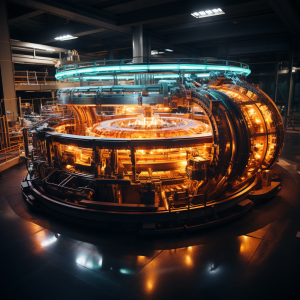
How does the photoelectric effect demonstrate the particle-like nature of light?
The photoelectric effect is a critical phenomenon in quantum mechanics, providing some of the earliest evidence for the dual nature of light, which exhibits both wave-like and particle-like properties. In fact, Albert Einstein’s explanation of the photoelectric effect, which validated the particle-like nature of light, earned him the 1921 Nobel Prize in Physics. To understand why the photoelectric effect is so significant, it’s important to explore what it is, how it works, and the fundamental principles it demonstrates.
What is the Photoelectric Effect?
The photoelectric effect is a process in which electrons are emitted from a material, typically a metal, when it absorbs energy from light. However, rather than a straightforward input-output relationship where increasing light intensity results in more energy for the ejected electrons (as classical wave theory would predict), experimental observations of the photoelectric effect revealed some peculiar characteristics. These characteristics, which could only be explained by considering light as particles (photons), included:
The Existence of a Threshold Frequency
For a given material, there is a certain minimum frequency of incident light below which no electrons are emitted, regardless of the light’s intensity. This is called the threshold or cutoff frequency.
Instantaneous Emission of Electrons
If the frequency of the incident light is above the threshold frequency, electrons are emitted almost instantaneously, suggesting that energy is transferred in discrete packets.
Energy of Emitted Electrons Independent of Light Intensity
The kinetic energy of the emitted electrons does not depend on the intensity of the incident light. Instead, it increases with the frequency of the light, with the intensity only affecting the number of electrons emitted.
Einstein’s Explanation: Photons and the Particle-Like Nature of Light
Classical wave theory, which depicted light as a continuous wave, could not adequately explain these observations. It was Albert Einstein who successfully applied the quantum hypothesis of Max Planck to the photoelectric effect.
Planck had proposed that electromagnetic energy, such as light, could only be emitted or absorbed in discrete packets or quanta, later known as photons. Each photon carries energy proportional to its frequency, with the constant of proportionality being Planck’s constant (h). However, Planck did not suggest that light itself is quantized; his hypothesis was purely a mathematical device to explain the blackbody radiation problem.
Einstein went a step further and proposed that light itself is made up of these quanta or photons, treating them as particles. In the context of the photoelectric effect, a photon collides with an electron in the material. If the photon’s energy (given by E=hν, where ν is the frequency of light) is greater than the work function of the material (the minimum energy needed to liberate an electron), the excess energy is imparted to the electron as kinetic energy. This explained the observed threshold frequency — below this frequency, photons do not have enough energy to overcome the work function, so no electrons are emitted, regardless of light intensity.
Validation of the Quantum Hypothesis and the Birth of Quantum Mechanics
Einstein’s explanation of the photoelectric effect was a key validation of the quantum hypothesis. The direct proportionality between the frequency of incident light and the kinetic energy of photoelectrons, along with the existence of a threshold frequency, confirmed that light energy is indeed quantized.
In one stroke, Einstein’s explanation of the photoelectric effect had shattered the purely wave-based view of light and introduced the idea of wave-particle duality, which would later be extended to matter as well. This laid the groundwork for the development of quantum mechanics, the theory that describes the behavior of particles at the smallest scales.
While the photoelectric effect played a pivotal role in illustrating the particle-like nature of light, other phenomena, like interference and diffraction, highlighted light’s wave-like properties. These dual characteristics of light, which seemed contradictory within classical physics, were brought into harmony by quantum mechanics, a testament to the transformative insights brought about by the exploration of the photoelectric effect.
Conclusion
The photoelectric effect demonstrates the particle-like nature of light through its unique characteristics, such as the existence of a threshold frequency, the instantaneous emission of electrons, and the independence of an electron’s kinetic energy from the intensity of incident light. Albert Einstein’s explanation of this effect, which proposed light as being composed of discrete particles known as photons, was instrumental in validating the quantum hypothesis and laid the foundation for the development of quantum mechanics. The photoelectric effect, therefore, offers profound insights into the fundamental nature of light and the quantum realm.




